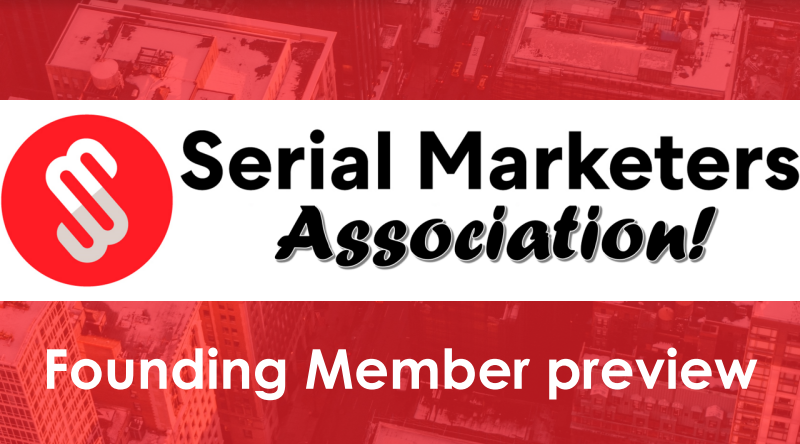 Big Ben, Twitter brand theft victim – image by simplistic.designs via Flickr
Big Ben, Twitter brand theft victim – image by simplistic.designs via Flickr
Here's today&39;s Social Media Insider, originally published in MediaPost:
If you&39;re not in control of your digital identity, the odds are
pretty good that someone else is, or will be if you have any brand recognition
at all.
Consider the recent example of Pittsburgh Steelers quarterback Ben
Roethlisberger, whose digital doppelganger created false identities spanning a
range of social media sites and even claimed he had been diagnosed with skin
cancer. ESPN advised in its NFL Rumor Central, "Not real, folks. In fact,
if you see an athlete with a Twitter, you should assume — at least at first —
that it&39;s fake. Assume it&39;s a Twitter twerp."
What happens to celebrities happens to brands too. Identity
hijacking is prevalent in social media largely because it&39;s easy to set up
accounts and find an audience. The potential for the reach is enough of a lure.
When I recently asked Facebook&39;s Chris Pan who Facebook&39;s audience is, he said
something to the effect of, "Pretty soon it&39;ll be everyone." He&39;s not
that far off.
Major brands have increasing recourses in taking charge of their
social identities online. If you&39;re in this elite group, you have a shot at
pleading your case to sympathetic ears at various digital properties. MySpace
has always restricted brand pages to paying marketers, Facebook is now
aggressively cracking down on branded Pages not owned by someone affiliated
with the brand, and Twitter will often turn over parked accounts to the
rightful tweeter upon request.
Still, this strategy doesn&39;t solve two issues. One is that a
reactive approach could occur after squatters have already damaged a marketer
or brand. The other is that for the vast majority of businesses and brands,
there&39;s no clear rightful owner. For instance, when I think of Sal&39;s Pizza,
it&39;s the Sal&39;s Pizza on Mamaroneck Avenue in Mamaroneck, N.Y., with the best
Sicilian slices I&39;ve ever eaten. But there are Sal&39;s Pizzas in Dallas, Boston,
New Holland, Pa., and Little Neck, N.Y.; the last one even owns  myspace.com/salspizza.
On Twitter,&0160; @salspizza
belongs to a restaurateur in Limerick, Ireland. I know the real Sal&39;s isn&39;t in
Ireland – come on! – but it would be hard for Mamaroneck&39;s Sal to make a case,
no matter how many of my old high school buddies sign a petition.
So, what&39;s a marketer to do? Here are ten steps to follow:
1) Run an audit of where your brands are. Note the usernames you
use. If you have one flagship brand that&39;s also your company name, then it&39;s
easy. If you have a stable of brands, this could be a long list.
2) Prioritize the usernames. In the Sal&39;s example, the business
may be Sal&39;s Ristorante but it&39;s known as Sal&39;s Pizza, so salspizza (which is
also easier to spell and type) would be the preferred name.
3) Use a site such as usernamecheck.com
or knowem.com
to enter see if your usernames are taken across scores of sites. Also check for
other brand terms. Prioritize usernames that are both memorable and widely
available — that&39;s the sweet spot.
4) For any sites that you know are priorities, register your key
usernames. If you&39;re not sure which sites to prioritize, start with the ones
you&39;ve heard of.
5) Eliminate any sites that are only for consumers and are
off-limits for marketers or brands. For this and the next steps, call on the
most social-media-savvy person you know, ideally someone you work with closely
in your company, at an agency, or elsewhere.
6) Now you need to review all the other sites and prioritize
further. If you&39;re at a total loss, use Compete or Quantcast&39;s free tools to
see how much traffic the sites get, and pick a threshold. 7) For any of these
sites, if you don&39;t plan on using them right away, fill in the minimal
information required, post a link back to your homepage or the hub of your
social marketing program, and adjust the privacy settings (where possible) so
that&39;s they&39;re visible to the smallest audience. You don&39;t want to set false
expectations for engaging consumers, and you don&39;t want to publicize a brand
presence that falls short of your standards.
8) Check where competitors are. One easy way to do so is look for
their most obvious usernames and visit those accounts to see if they&39;re really
competitors or squatters. If you can&39;t find much, run some basic searches.
Consider whether it&39;s worth joining competitors on those sites if you haven&39;t
signed up already.
9) Share the list of registered usernames and passwords with a few
trusted colleagues so you&39;re not the only one with the information.
10) Don&39;t be a jerk. You&39;ll find opportunities to undermine
competitors throughout this process. Be one of the good guys. Try believing in
karma.
Ideally, marketers will have clear-cut strategies for where they
want to be and how they&39;ll develop their digital and social brand identities.
But there are two problems with this approach. First, for many marketers,
that&39;s just not the case. Second, if marketers think too hard about their
strategy, they may never get around to covering some of the basic steps. If you
don&39;t have a Twitter strategy, for instance, go ahead and register the most
relevant usernames you can, make the profiles private, and then return to them
when you know what you&39;re doing.
People will still impersonate celebrities and
brands. It&39;s a price to pay for popularity, or notoriety if that&39;s the case.
But if you&39;re in these arenas for real, it takes a lot of the fun off others
trying to claim they&39;re you.




![Reblog this post [with Zemanta]](http://img.zemanta.com/reblog_e.png?x-id=6fb8d062-b858-47d5-af1a-a407e818060b)



People reacted to this story.
Show comments Hide commentsUh, this is such a great post David! This is an issue that most brands or individuals probably don’t even think about until it happens. And obviously if aren’t on facebook or twitter, you should be for social networking purposes, but who would think that they’d need to do so in order to take a defensive stance?
Couldn’t help but chime in. I’m a partner with http://namechk.com (@namechk on Twitter) and our passion is to teach about “brandjacking” prevention. The first thing I tell people is to secure your brand name–even if you don’t plan on using it!
its extremely informative for me, and I totally agreed with you that your 10 steps of mastering social domain names are outstanding, thanks for sharing